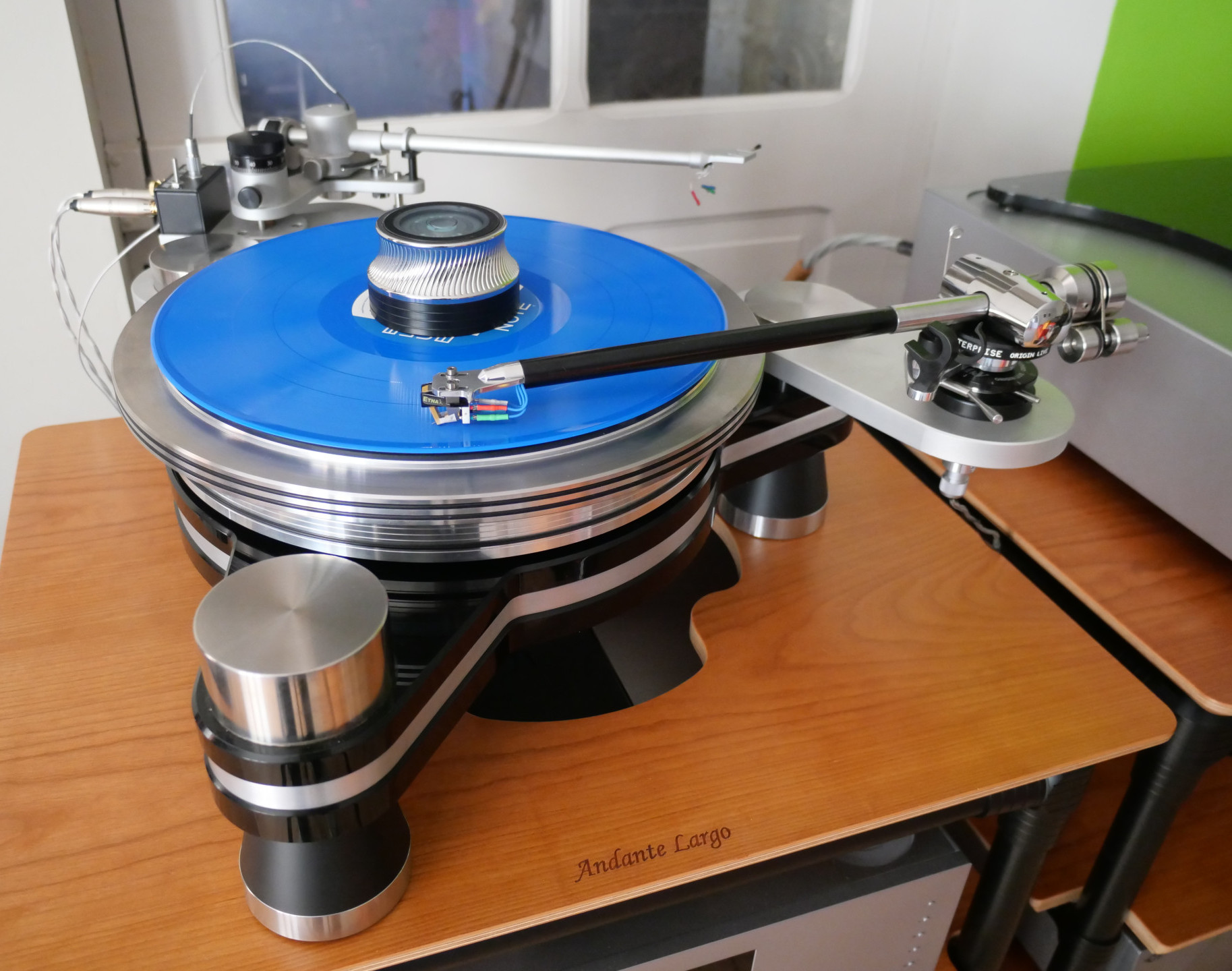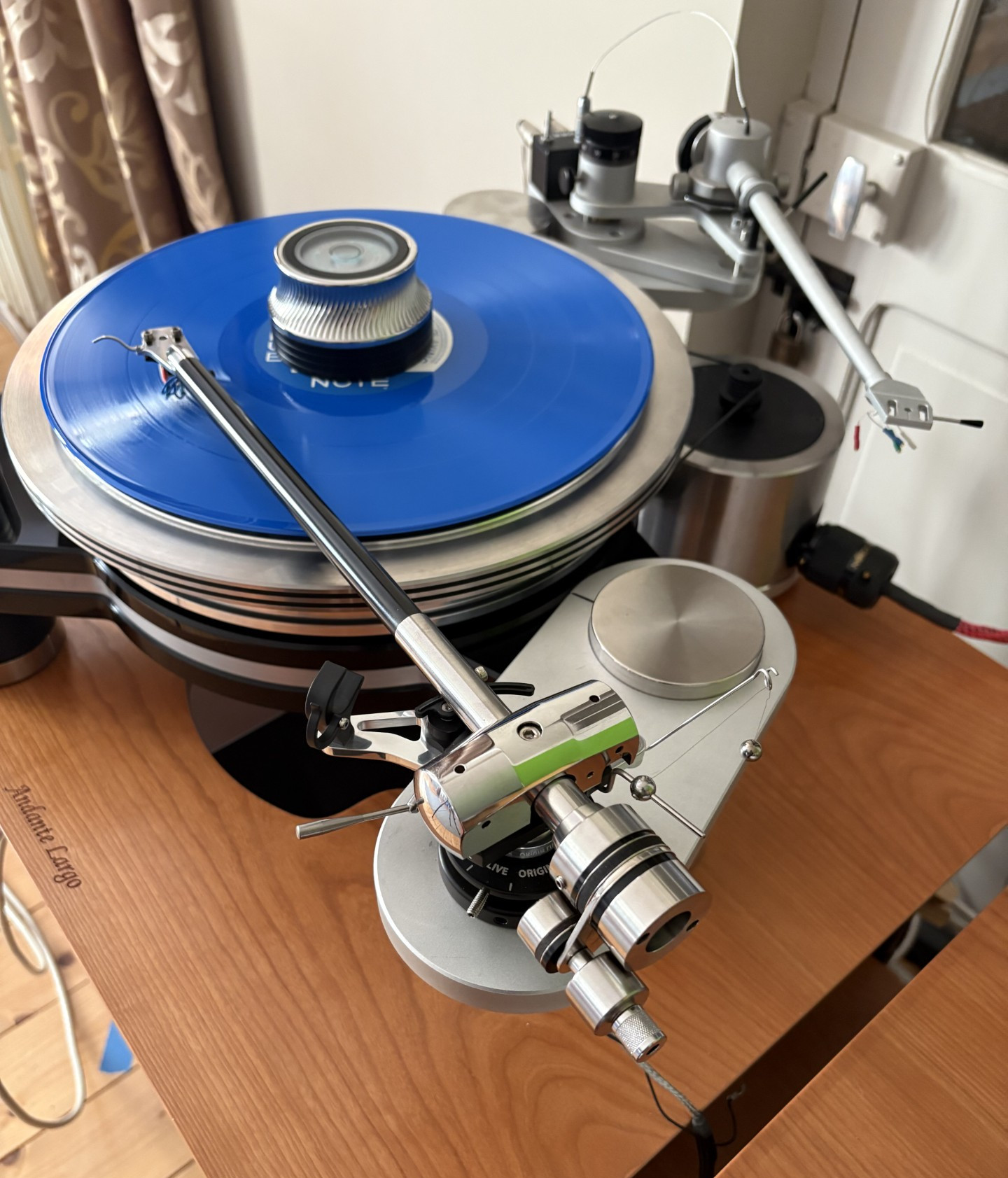 In some respects, this reflects experience with the Kuzma 4Points, where the Lyra definitely prefers the lower effective mass 11” version and the Fuuga, the heavier 14”. Kuzma’s published numbers don’t quite stack up, but then I’ve always found the quoted 1g increase in effective mass for the 3” longer arm-tube hard to square.
In some respects, this reflects experience with the Kuzma 4Points, where the Lyra definitely prefers the lower effective mass 11” version and the Fuuga, the heavier 14”. Kuzma’s published numbers don’t quite stack up, but then I’ve always found the quoted 1g increase in effective mass for the 3” longer arm-tube hard to square.
Where does all this leave the Enabler? Talking to Mark Baker of Origin Live, he concurs with my findings. With ‘bigger’ cartridges and his ‘bigger’ arms, the Enabler is neither necessary, nor, in many cases, preferred. However, he suggests that with lesser cartridges and arms, the results can be spectacular. That’s too good a claim to ignore, but it’s also outside the scope oof this review. In the context of the Enterprise, or OL’S Agile or Renown arms that sit above it in the range, including the Enabler is more a case of belt and braces: try it, you might like it. But given the way in which the Enterprise handled the heavy and mechanically challenging Fuuga, I suspect that in most cases, it will be more than able to look after itself.
Direct coupling…
The Fuuga/Enterprise experience was as interesting as it was exhilarating, but moving forward with the review, I switched the focus to the Lyra Etna Lambda and the mechanically similar X-quisite Voro (11.3g and 12cu) cartridges, both of which performed beautifully in the 12” arm, without benefit of decoupled mounting. With either cartridge mounted, the Enterprise continued to show its sure-footed rhythmic agility and freedom from slurring or clutter, but its broader performance attributes also started to emerge. With the Fuuga on board, the Enterprise might have lent into the music, but with the Lyra Etna up-front, it pulled back to a more stable, almost innately centred presentation.
With a greater grasp of each note’s envelope, the Enterprise allowed a far more varied and complex rhythmic landscape to develop. At the same time, its tonal and harmonic accuracy, its ability to latch onto the character and identity of a voice or instrument, to separate voices and instruments when singing harmonies or playing in chorus banished confusion, making it clear exactly who was doing what with whom. This combination of tonal separation and temporal security brings an internal integrity to the musical event, fixing its pattern, making for an easy clarity that allows the music to breathe and step away from the speakers and system. It’s what you might call proportion: the sense of inner balance that maintains depth relative to width, that scales dynamics and capture not just the position and attack in a note, but the space between it and the next. Lots of products can handle one of these attributes, some can handle more than one, the product that can handle them all is rare indeed – and if it sits right at the front of the system, it’s musically powerful too.

Let’s start with the Etna/Enterprise’s new-found rhythmic agility. Playing Art Blakey and The Jazz Messengers (Moanin’, Blue Note BST-84003) the variety and flexibility of the rhythms on display is engaging as it is confident. The title track’s solid rhythmic base is propulsive and suggestive, with its sudden halts and evolutions positively encouraging Lee Morgan’s soaring, stabbing trumpet lines, Benny Golson’s sinuous tenor sax. ‘Are You Real’ brings a pushy, insistent and upbeat quality, while ‘Along Came Betty’ literally steps back to an easier perambulation, over which meandering horn and piano lines can weave. It’s an impressive example of the arm’s easy rhythmic flexibility, its ability to match the pace and intent of the music, rather than gating or regulating the musical energy that drives the performance, all in a single LP side.

